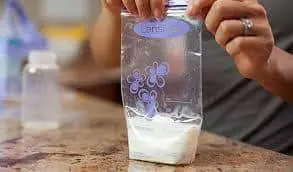With many states considering the legalization of marijuana, breastfeeding mothers may be wondering if they can smoke marijuana while breastfeeding. As a breastfeeding mother from one of the only states that does have and has had legalized recreational in-home use of marijuana, (Alaska) this is not a question that had occurred to me, but one I have heard often.
Do doctors deem marijuana breastfeeding safe?
The jury is out on this one so to speak. There is no doubt that when a mother consumes marijuana in any way, the THC, or active ingredient, is afterward present in the infant’s urine and feces for up to three weeks from one use. What doctors seem torn about is whether this transference causes determent to the baby. Most doctors at this current time take a similar stance to whether marijuana use while breastfeeding to that of breastfeeding while smoking tobacco. It is best to stop, okay to slow use, and may be unhealthy to use heavily.
What effects could marijuana use while breastfeeding cause?
There have actually been studies done on the subject. Marijuana has been shown to decrease milk supply in mothers due to lowered levels of the hormone that causes lactation. Marijuana has also been shown to cause sedation, lethargy, and weak feeding in infants with regular use. The combination of the two could cause weight gain or other health issues in your baby.
One study found that babies that were exposed to marijuana during early developmental stages (to be exact before 3 months of age) by breastfeeding mothers showed poor gross motor development by one year of age. Another study done on animals showed DNA and RNA mutation present in subjects fed breast milk from marijuana exposed mothers. The effects of these mutations are unknown. Some researchers suggest marijuana use while breastfeeding may affect brain cell growth in the baby, however studies on infant mental development showed no decrease in infants that fed from mothers who regularly used marijuana.
Infants that are present when marijuana is smoked are also exposed to second hand smoke. This alone has been shown to increase the risk of SIDS.
So, Marijuana, breastfeeding safe?
That’s entirely up to you. Most of the studies done on the effects were done on chronic users who smoked at least once a day. Detrimental effects include decreased milk supply, weakness, poor suckling in the infant, and gross motor developmental stunting when exposed before the third month of life. DNA and RNA mutation are possible. The exact effects of marijuana use while breastfeeding are unknown and as a mother, I find unknown a good reason to not use. If you must, I would recommend only occasional use after the third month of life.



